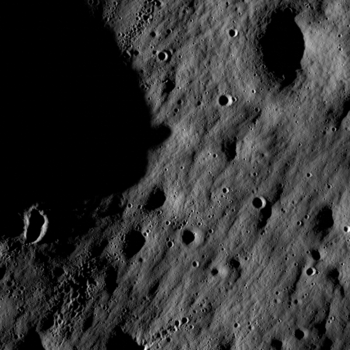Moon (the Movie)
Wednesday, August 12th, 2009
So far I’ve stuck pretty much to science in this blog, but I have promised to write about the moon in our culture as well. I’ve been looking forward to seeing the movie Moon, starring Sam Rockwell, ever since I first read about it this spring. It has been out for two months now, and I managed to catch it at a local theater that had it for a one-week engagement.
I’m very glad that I had not read anything about the plot of the movie, so that during the movie I was as clueless about what was going on as the character(s) were. Kay, who had seen a review on TV, knew more about the basic premise. So she picked up on the clues faster but missed out on some of the surprise factor. Nevertheless, we both liked the movie.
I am very much a fan of science fiction that takes place in a future we could conceivably get to, unlike such franchises as Star Trek and Star Wars that completely bend reality to suit the purposes of the storyteller. Moon has a very gritty, realistic feel. The lunar base feels claustrophobic. The space suits are always grimy. Things are broken and don’t get fixed. A central plot point, involving exposure to radiation, is a real possibility on the moon and something that the designers of lunar bases will have to contend with. (One hopes that they will never contemplate the solution portrayed in this movie.)
There are a few small holes in the plot that don’t spoil the overall story too badly. For example, any astronauts who go to the moon will certainly know about the danger of radiation and not be taken by surprise, as they seemed to be in the movie. Also, the astronauts are supposed to be on the far side of the moon, but one of them drives what seems to be a short distance and then he can see Earth.
One extremely cool thing about the movie is the computer, Gerty. It is obviously an homage to HAL, the computer in 2001: A Space Odyssey. I read one review on IMDb (after seeing the movie) that complains about the similarity, but I think it is delightful how the director plays with that cultural reference. Anybody who has watched 2001 will have certain expectations about how Gerty is going to behave — and let me just say that you will be very surprised.
Some of the visual elements of the movie are wonderful. I would nominate this movie for an Oscar in the following categories:
- Most Effective Use of Emoticons. A little bit reminiscent of the Jack-in-the-Box commercials, but much better!
- Best Use of a Full-Earth Shot. You’d think that we would be jaded, after seeing the Earthrise photos from Apollo, but the director gives us one look at Earth from the moon and uses the image very, very wisely. I was especially shocked at how huge Earth was — and, of course, that’s to be expected. Earth from the moon would look quite a bit bigger than the moon from Earth.
It’s interesting that the director, Duncan Jones, is the son of rock singer David Bowie, who of course had his own SF-oriented phase (“Space Oddity,” “Ziggy Stardust and the Spiders from Mars” and all that). I admire Jones for not shying away from his famous dad’s legacy, and exploring some of the same issues in a way that is completely different from his father. Also, as you might expect from the son of a musician, the music in the movie is very effective.
According to IMDb, Moon ranks in the top 250 movies (of all time!) in user rankings, coming in at #242, just above Rocky (#243) and just below Roman Holiday (#241). It has an average user rating of 8.4 out of 10. So a lot of people liked it! It probably won’t be in movie theaters too much longer, but if you can’t find it in a theater, perhaps you can catch it when it comes out on DVD.
